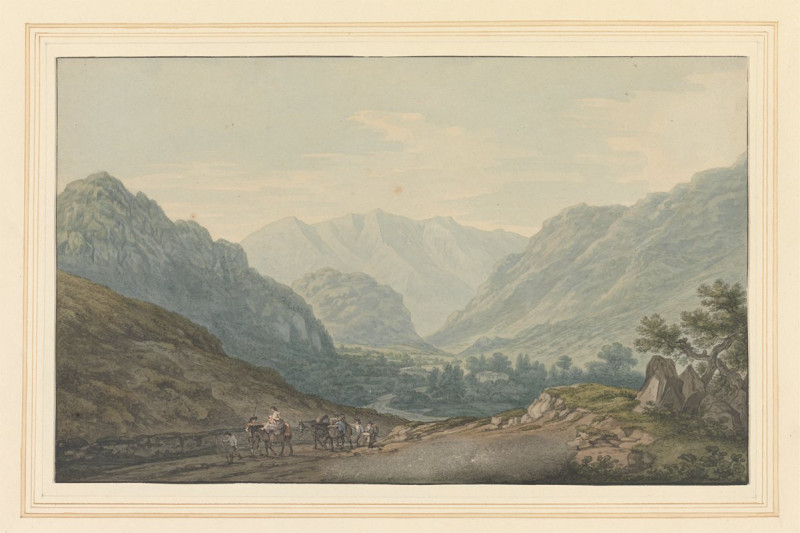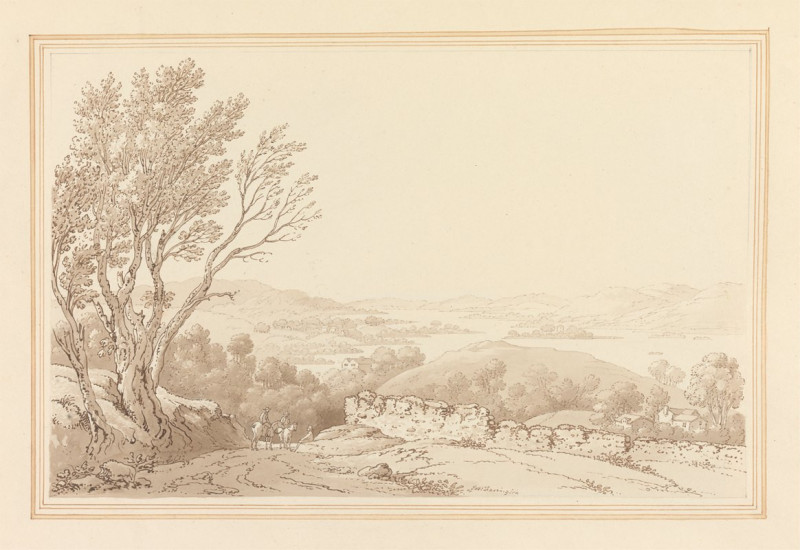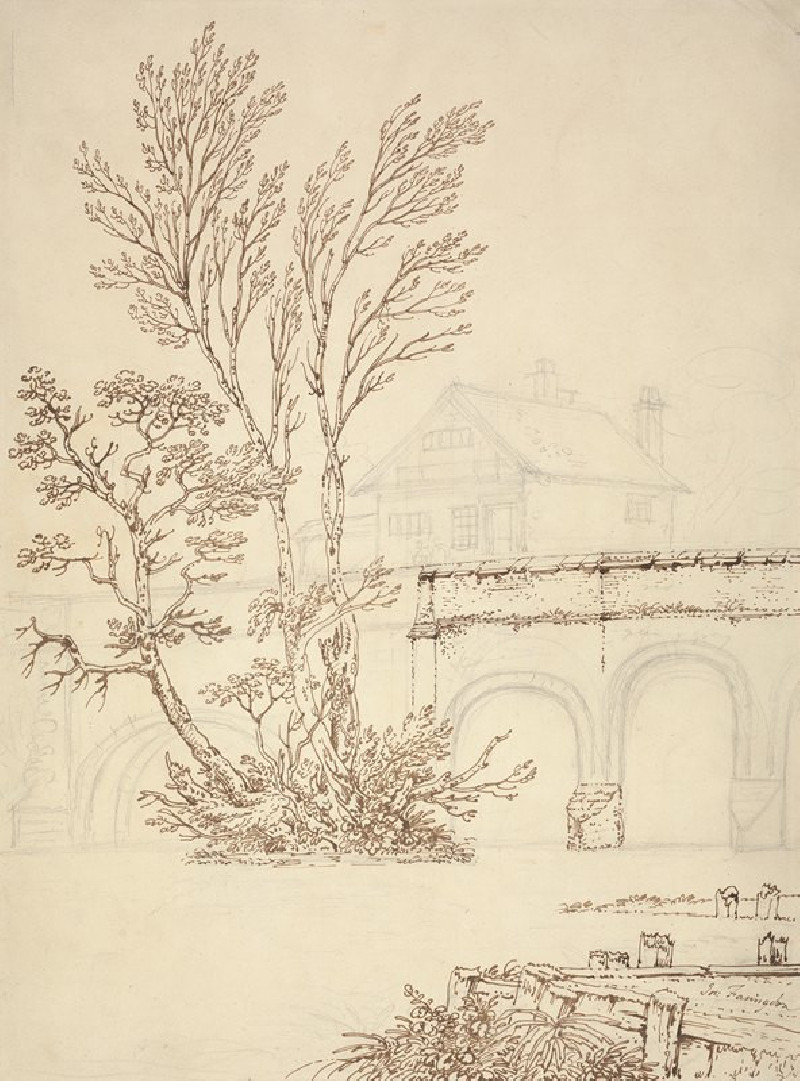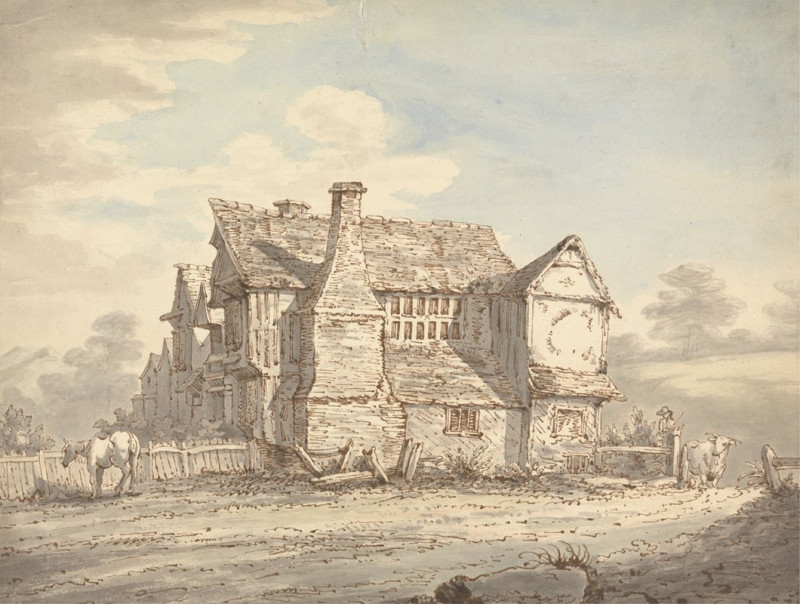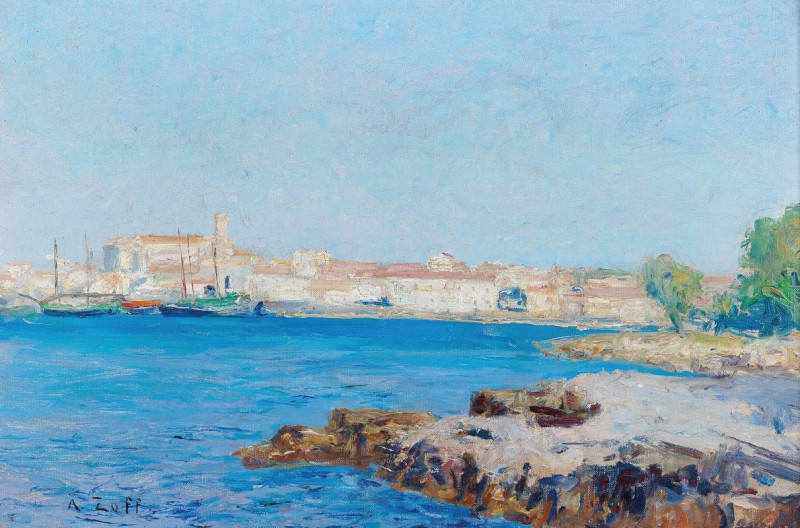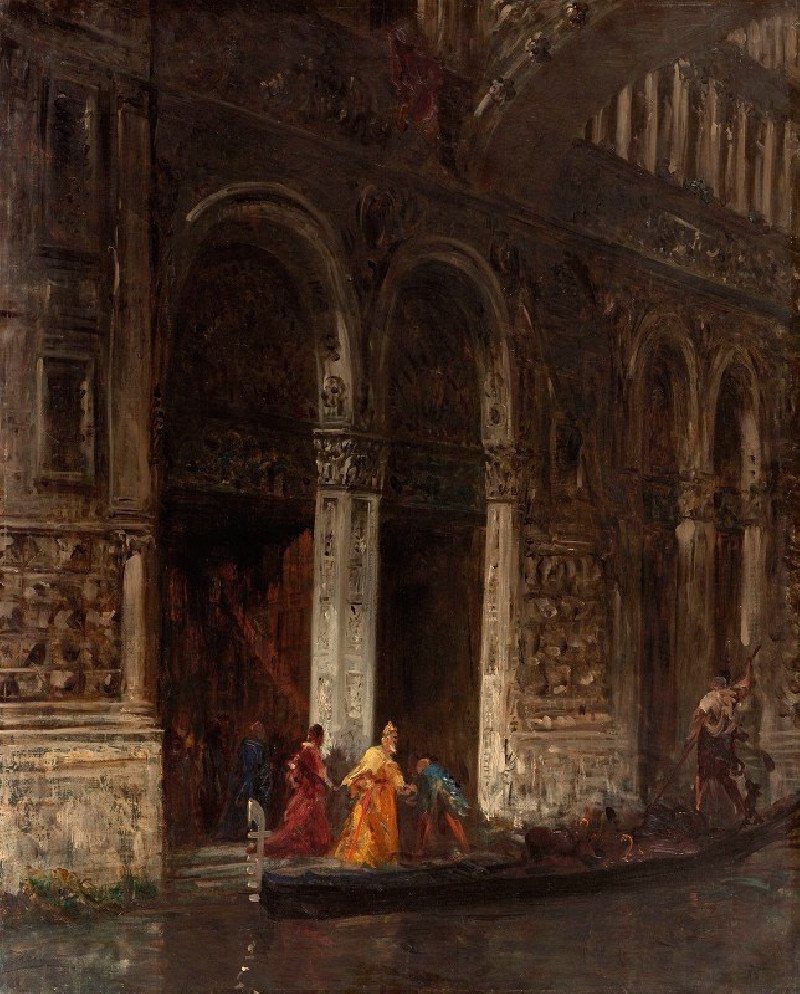View of Skiddaw and Derwentwater (ca. 1780)
Technique: Giclée quality print
Recommended by our customers
More about this artwork
Discover the serene landscape captured by Joseph Farington in his exquisite painting, "View of Skiddaw and Derwentwater," dating back to around 1780. This breathtaking artwork elegantly portrays the harmonious blend of natural beauty and daily life in the English Lake District during the 18th century.In Farington's depiction, viewers are drawn into a scenic vista framed by lush, detailed trees that gently lead the eye towards the calm waters of Derwentwater. Beyond the reflective lake, the majestic Skiddaw mountain rises, its contours softly muted by atmospheric perspective, thereby adding depth and dimension to the composition.Foregrounding the scene are figures emblematic of pastoral life—a woman seated and conversing with a man standing beside her, suggesting a moment of leisure or shared reflection. Another figure strolls along the shoreline, further animating the tranquil scene. Small boats dot the lake, enhancing the sense of peaceful coexistence between humans and nature.Joseph Farington's masterful control of light and shadow, combined with his delicate approach to color, crafts a soothing palette that invites contemplation and admiration. Each element in "View of Skiddaw and Derwentwater" is meticulously rendered, from the intricate bark of the trees and the gentle ripples on the water to the distant, hazy mountains.This painting not only showcases Farington’s artistic prowess but also serves as a historical snapshot of idyllic rural life, celebrating the timeless and enduring beauty of the English countryside.
Delivery
Returns
Joseph Farington RA was an 18th-century English landscape painter and diarist.
Born in Leigh, Lancashire, Farington was the second of seven sons of William Farington and Esther Gilbody. His father was the rector of Warrington and vicar of Leigh. Three of his brothers—William, Henry, and Richard—were "employed in the naval service of the East India Company". Edward died of yellow fever when he was 32. Robert attended Brasenose College and became vicar of St George in the East, London (whose advowson was held by Brasenose). George Farington became a painter, like Joseph himself.













